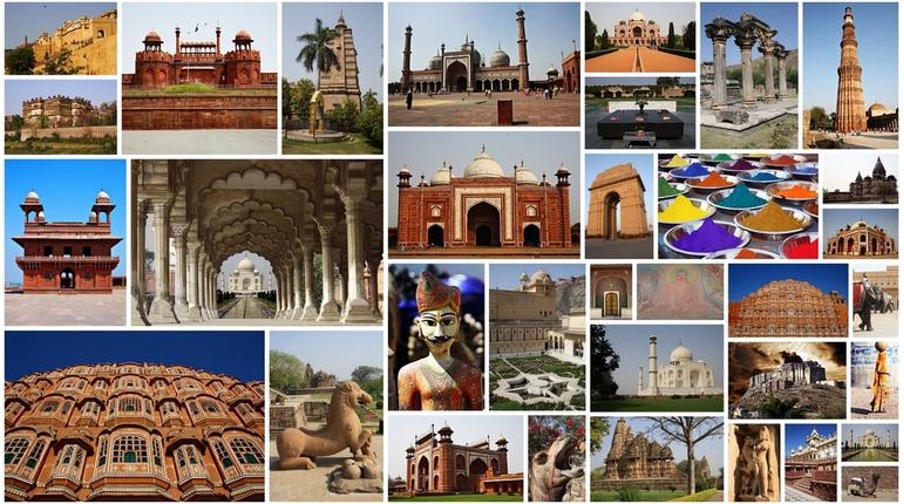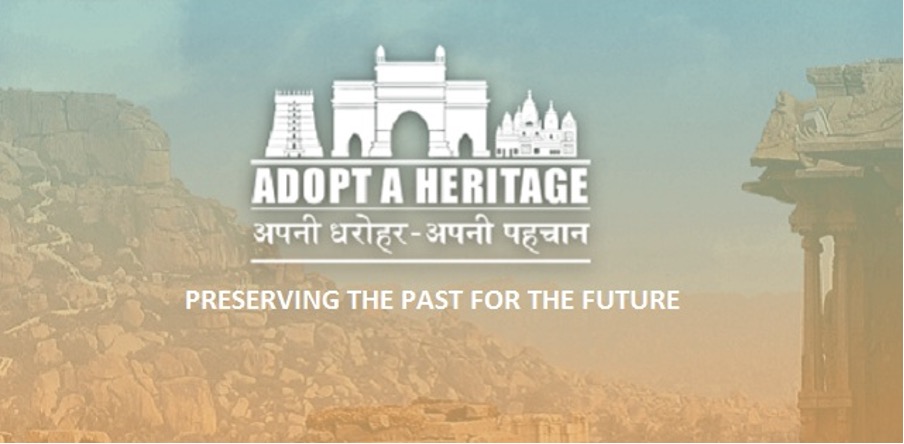What is the one common thing among Red Fort (Delhi), Gandikota Fort (Andhra Pradesh), Gangotri Temple surroundings (Uttarakhand), Mount Stok Kangri Trek (Ladakh), Hazara Rama Temple (Karnataka), Qutub Minar (Delhi), Ajanta Caves (Maharashtra), Leh Palace (Jammu & Kashmir), Jantar Mantar (Delhi) and Surajkund (Haryana), apart from the fact that they are all architectural wonders and located in India? They are all adopted! Under the ‘Adopt a Heritage: Apni Dharohar, Apni Pehchaan’ scheme, an initiative of the Ministry of Tourism, in association with the Ministry of Culture and the Archaeological Survey of India (ASI), which was launched on 27 September 2017 on the occasion of World Tourism Day by the then President of India, Shri Ram Nath Kovind, these heritage sites, along with 83 others were put up for adoption.

The sites are selected on the basis of tourist footfall and visibility and is open for adoption to anyone, private or public companies and individuals, who are known as ‘Monument Mitras’ subject to their feasibility and CSR. These ‘Monument Mitras’ will be responsible for providing amenities and facilities in exchange for getting recognition on the site or monument premises and the Ministry of Tourism digital platforms. The profits the adopted company gets from these sites/ monuments will be used for the maintenance and upgradation of the facilities. An ‘oversight and vision committee’ has been set up which is chaired by the Tourism Secretary and the Cultural Secretary jointly and is responsible for selecting the ‘Monument Mitras’ by evaluating their ‘vision’ for development of amenities at these sites/monuments. The scheme was formulated with an aim of “Preserving the Past for the Future” and providing “quality and inclusive provision of amenities and facilities across heritage, natural, and tourist sites through active participation of public and private sector organisations and individuals”, with the initial period of adoption being five years. If the company does not comply with ASI guidelines then its contract can get terminated as well.
Though noble, this scheme suffers from lack of adopters for many sites which has led to revising the scheme, to be ready in 2023. In addition to project mapping, light and sound shows will be introduced in these sites as well. The official website for the scheme shows a total of 106 tourist places, more than 600 registrations for Monument Mitras and a total of 27 Memorandum of Understanding signed. Directorate of UP State Archaeology (DUPSA) decided to promote the scheme during the Global Investors Summit and G20 events in Lucknow in February 2023. According to DUPSA director Renu Dwivedi, setting up of stalls and inviting people and organisation to come forward in their role as Monument Mitra will help increase awareness about the scheme for the good. Due to the poor responses, DUPSA have decided to hand over five heritage sites to the tourist department to convert them into heritage hotels while remaining three sites await adoption

According to the website, this scheme is meant to support the ASI and the government in the challenges it faces in operating these heritage sites. With private enterprises coming in, it is expected that domestic and international tourism will get a boost. However, when asked about the opinion of the archaeologists not all seems well according to them. Abhijit Dandekar, archaeologist from Pune’s Deccan College says, “On paper, this sounds like a great initiative because the government cannot possibly take care of everything. But in actuality, we have to closely look into what kind of proprietorship the private companies employ, because the monuments should not be exploited.” Kurush Dalal, archaeology professor at the Mumbai University believes that the guidelines laid down by the government can help in growing tourism at the heritage sites of India. He cited the example of a same strategy undertaken by the government of Maharashtra in 2007, which failed overall, but witnessed an increase in visitor count in the adopted sites such as Naldurg Fort in Osamabad district. The scheme raises concern as much as it promises a favourable tourism outcome, and this has been highlighted by Arvind Jamkhedkar, retired director of archaeology and museums with the government of Maharashtra. In the words of Mr Jamkhedkar, “Private companies are concerned about their revenues, and they don’t know much about conservation work. So the responsibility of the state increases in terms of supervising these companies closely.” Sanjay Sarma, founder of branding and design consultancy Design Worldwide believes that the decision of letting corporate houses get involved with the maintenance of heritage sites of the country helps in elevating its status on the international front as “a corporate can significantly improve its equity and value in the eyes of all stakeholders by sustaining its efforts in this direction.”

While the legal status of the monument does not change after its adoption, the way the heritage site is maintained, preserved and taken care off by its adopter is uncertain and depends heavily on how the organisation or individual decide to use their association with the cause. Samit Sinha, founder and managing partner at Alchemist Brand Consulting states that “a crassly commercial attempt will certainly demean the aura of the monuments, sites and buildings that are powerful symbols of a country’s historical richness.”
As a whole, this initiative by the government has been formulated to ensure the wellbeing of the monuments and to ensure an active participation of the public. How well it actually turns out in reality needs to be looked at with long term in mind. It is only rational that no private entity will invest without seeking a profit motive, but the government has to ensure that the worth of these sites are not overlooked and/or disturbed while cashing in on the profits earned from them.
Written By – Iesha Tandon
Edited By – Aryaa Dubey




